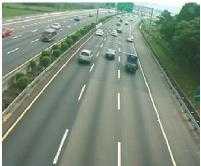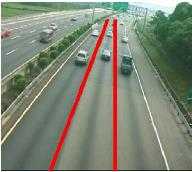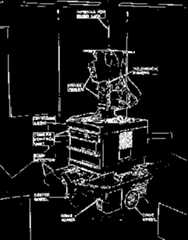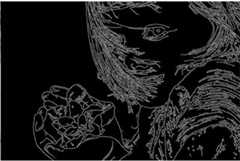- Notifications
You must be signed in to change notification settings - Fork2
To The lane detection has proved to be an efficient technique to prevent accidents in Intelligent Transportation Systems.The review on lane detection has shown that the most of the researchers has neglected the problem of the fog and noise in images. Thus noise and fog may reduce the accuracy of the existing systems.
StudentCode-in/Lane-Detection-using-OpenCV
Folders and files
| Name | Name | Last commit message | Last commit date | |
|---|---|---|---|---|
Repository files navigation
Project Admin
https://github.com/akshitagupta15june
Have a look at my original repohttps://github.com/akshitagupta15june/lane_detection_opencv
To The lane detection has proved to be an efficient technique to prevent accidents in Intelligent Transportation Systems.The review on lane detection has shown that the most of the researchers has neglected the problem of the fog and noise in images. Thus noise and fog may reduce the accuracy of the existing systems.
fork it, try it, add something new and interesting.
Lane coloration has become popular in real time vehicular ad-hoc networks (VANETs). The main emphasis of thispaper is to find the further ways which can be used further to improve the result of lane detection algorithms. Noise,visibility etc. can reduce the performance or the existing lane detection algorithms. The methods developed so far areworking efficiently and giving good results in case when noise is not present in the images. But problem is that theyfail or not give efficient results when there is any kind of noise or fog in the road images. The noise can be anythinglike dust, shadows, puddles, oil stains, tire skid marks, etc.
- Introduction
Traffic accidents have become one of the most serious problems in today's world. Roads are the mostly chosen modes oftransportation and provide the finest connections among all modes. Most frequently occurring traffic problem is thenegligence of the drivers and it has become more and more serious with the increase of vehicles.Increasing the safety and saving lives of human beings is one of the basic function of Intelligent TransportationSystem (ITS). Intelligent transportation systems are advanced applications which aim to provide innovative services relatingto different modes of transport and traffic management. This system enables various users to be better informed and makesafer, more coordinated, and smarter use of transport networks.These road accidents can be reduced with the help of road lanes or white markers that assist the driver to identify the road area and non-road area. A lane is a part of the road marked which can be used by a single line of vehicles as to control and guide drivers so that the traffic conflicts can be reduced.
Technology Stack
OpenCV
Libraries required for this task:
NumPy: It comes by default with anaconda
Matplotlib: To install matplotlib, type – “pip install matplotlib” into your command line
OpenCV: It can be installed in two ways, using anaconda or using pip.
To install using anaconda, type- “conda install -c conda-forge opencv”, or to install using pip, type-“pip install opencv-python” into your command line
Road scene image
Lane detection
To detect road markings and road boundaries various methodologies are used like Hough Transform, Canny edgedetection algorithm, bilateral filter. The main working of all these are as follows:
The Hough transform is a technique in which features are extracted that is used in image analysis and digital imageprocessing. Previously the classical Hough Transform worked on the identification of lines in the image but later it has beenextended to identifying positions of shapes like circles and ellipses. In automated analysis of digital images, there was a problem of detecting simple geometric shapes such as straight lines, circle, etc. So in the pre-processing stage edge detector has been used to obtain points on the image that lie on the desired curve in image space. But due to some imperfections in image data or in the edge detector, some pixels were missing on the desired curve as well as spacial deviation between the geometric shape used and the noisy edge pixels obtained by the edge detector. So to refine this problem Hough transform is used. In this the grouping of edge pixels into an object class is performed by choosing appropriate pixels from the set of parametric image objects.
Input Image Finding lines using Hough Transform
The simplest case of Hough transform is finding straight lines that are hidden in large amounts of image data. Fordetecting lines in images, the image is first converted into binary image using some form of thresholding and then thepositive or suitable instances are added into the dataset. The main part of Hough transform is the Hough space. Each point(d, T) in Hough space matches to a line at angle T and distance d from the origin in the data space. The value of a functionin Hough space gives the point density along a line in the data space.
For each point in the Hough space, consider all the lines which go through that point at an actual discrete set ofangles that are chosen on the priority basis. For each angle T, calculate the distance to the line through the point at that angle and discretize that distance using a priori chosen discretization, giving value d. Now make a corresponding discretization of the Hough space. This will result in a set of boxes in Hough space. These boxes are called the Hough accumulators. For each line it considers above, we increment a count (initialized at zero) in the Hough accumulator at point (d, T). After considering all the lines through all the points, a Hough accumulator with a high value will probably correspond to a line of points.
Edge detection works on the idea of the identification of points in the digital image at which the image brightness changessharply. The points at which image brightness changes sharply are organized into a set of curved line segments termed asedges. Edge detection is a fundamental tool in image processing particularly in the areas of feature detection and featureextraction. Applying an edge detection algorithm to an image may significantly reduce the amount of data to be processedand may therefore filter out information that may be regarded as less relevant, while preserving the important structuralproperties of an image. If the edge detection step is successful, the subsequent task of interpreting the information contents in the original image may therefore be substantially simplified. However, it is not always possible to obtain such ideal edges from real life images of moderate complexity.
Edge detection using Canny Edge detection algorithm
The Canny edge detector is an edge detection algorithm that uses a multiple stage algorithm so as to detect edges inimages. Its aim is to discover the optimal edge detection. In this definition, an optimal edge detector includes the following things
Good detection – the algorithm should be able to detect as many real edges in the image as possible.Good localization – edges marked through this algorithm should approach as close as possible to the edge in the real image.Minimal response – a given edge in the image should only be marked once so as to reduce false edges.
Bilateral filter is a simple and non-iterative scheme which smoothens the image while preserving the edges. The basic ideabehind the working of bilateral filter is that the two pixels should be close to one another. This filter split an image intolarge-scale features i.e. structure and small scale features i.e. texture.
In this filter every sample is replaced by a weighted average of its neighbors. These weights reflects two forces i.e.the closeness of the neighborhood with the center sample so that larger weight is assigned to the closer samples, andsimilarity between neighborhood and the center sample so that larger weight is assigned to the similar samples.As it is seen in figures below, the output image is almost similar to the input image inspite of smoothening.
Filtered image using Bilateral Filter
An assistive navigation system has been developed for the blind by employing geometric figureslike straight line, parabola, or hyperbola. By combining color and local intensity information, this method detected correctly pedestrian marked lanes in different illumination and weather conditions (sunny, cloudy, strong shadows, times of day).
The color segmentation
procedure identified the yellow and white colored lanes followed by edge orientation in which the boundaries waseliminated, regions was labeled and finally the lanes was detected. As the height of the camera was relatively constant withrespect to the road surface, the road portion of the image can be exclusively cropped by providing the coordinates, so thatidentifying the lanes became much more efficient.
The lane detection has proved to be an efficient technique to prevent accidents in Intelligent Transportation Systems. Thereview on lane detection has shown that the most of the researchers has neglected the problem of the fog and noise inimages. Thus noise and fog may reduce the accuracy of the existing systems. one can use bilateral filter and dark channelprior methods to improve the results further. In near future we will propose a new technique which will integrate theperformance of lane detection by using bilateral filter.
About
To The lane detection has proved to be an efficient technique to prevent accidents in Intelligent Transportation Systems.The review on lane detection has shown that the most of the researchers has neglected the problem of the fog and noise in images. Thus noise and fog may reduce the accuracy of the existing systems.
Topics
Resources
Uh oh!
There was an error while loading.Please reload this page.
Stars
Watchers
Forks
Releases
Packages0
Contributors2
Uh oh!
There was an error while loading.Please reload this page.








